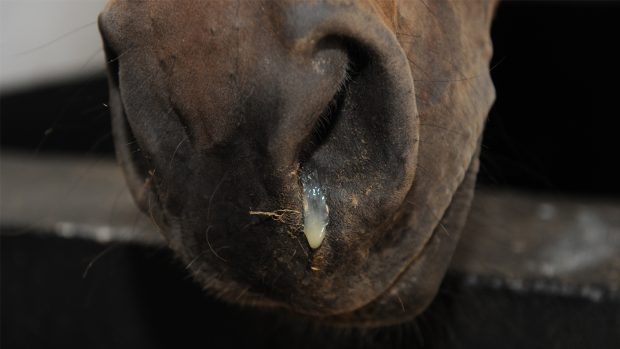Rick Farr of Farr & Pursey Equine Vets shares his expert advice on how to clear up cellulitis in horses
Q: Cellulitis in horses: “I’m losing the will to live with my gelding’s cellulitis, and wondered if you have any advice on how to get rid of it please? He’s now had it for about four weeks and the vet has been out on a weekly basis. He’s been on antibiotics, steroids and bute. He’s also had X-rays and scans that came back clear in case there was an underlying issue. He’s exercised daily at the moment, and turned out 24/7. As soon as antibiotics finish, his leg fills back up. Any advice would be gratefully received.”
A: As you probably have already been told, cellulitis is bacterial in origin, however sometimes the source and type of bacteria is not often known and this is likely to be the root of your current issue.
The vast majority of cellulitic cases, if treated promptly and aggressively, do very well, however complications such as excessive swelling, focal areas for the infection (for example foreign bodies under the skin) and a lack of response to initial medical therapy can not only prolong the course of the condition, but also damage the lymphatics within the limb.
Continued below…
Related articles:
- H&H forum: find out what H&H readers suggested
- Filled legs in horses: how to identify the cause
- Read more vet advice from H&H
So what’s going on in your horse’s case? There is a high probability that the lymphatic drainage (one of the structures related to draining fluids within the body) has been compromised. These small vessels have valves within them, which when distended for prolonged periods of time become incompetent and result in a loss of collateral drainage ability within the limb.
You also describe the use of antibiotics, steroids and ‘bute’ being ineffective. This could be due to the type of antibiotics used. With recurrent cases it is important to accurately select the antibiotic class with regards to the organism you are trying to treat. This can only be done by taking samples and sending them to a laboratory for culture and sensitivity tests, hence enabling accurate antibiotic selection. It is common knowledge that the continued use of antibiotics in refractory cases can result in the development of resistant bacteria and therefore antibiotic resistance. Hence the use of culture and sensitivity testing is imperative in these cases.
Very aggressive management is also essential when combined with medical therapy. Cold hosing, bandaging and prolonged support must be maintained until all infection is under control. If conventional management does not resolve the swelling, there are automated systems available to help reduce/remove all residual swelling. We use a local company which has a ‘Zamar’ machine (https://zamaruk.co.uk/equine-health/ & http://dean-farm.co.uk/spa.php), which has proved invaluable in reducing even the most stubborn of cases. However, it is essential the treatment is continued over three-four days (and several times a day) to make sure the likelihood of recurrence is reduced.
You can also monitor the progression of the treatment using bloods. Apart from looking for the obvious reasons for a lack of response such as immuno-suppression etc, we are able to monitor inflammatory compounds such as Serum Amyloid A (SAA). Serial testing of SAA can help a clinician to accurately monitor whether a treatment protocol is working and if changes to medical therapy needs to be made. I find this helps to confirm whether your money, time and effort is being well spent.
I hope these few suggestions help. Please contact your vet and I am sure they can implement any of the above alongside your current therapy.




